Posted: August 18th, 2015 | 1 Comment »
Has Hong Kong pushed some sort of heritage self-destruct button? In a week or so the following….
400-year-old Banyans slashed to destruction on Bonham Road
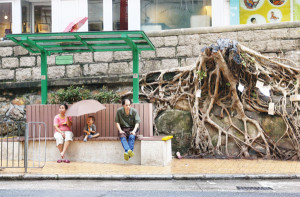
Thousands of classic neon signs ordered to be removed
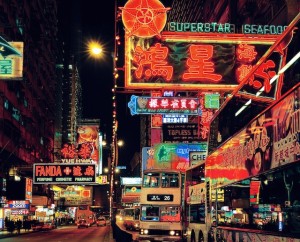
One of only a trio of surviving rounded corner buildings demolished in Wan Chai
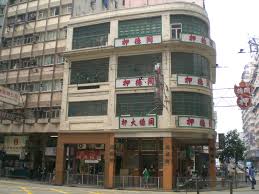
And now something that calls itself (yes, it really does…) Intellects Consultancy is recommending shutting down the tram lines and services in Central as they cause traffic congestion (yes, that’s their “intellect” – it’s the trams full of passengers – about 194,000 of them per day onboard) that cause the congestion, not the cars with one occupant!!)
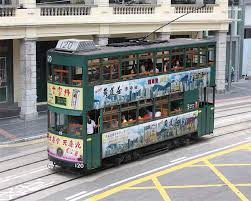
Posted: August 17th, 2015 | No Comments »
This deadly image of a Shanghai trolleybus in early 1938 which has taken a hit from a Japanese plane flying over Shanghai. The trolleycar is obviously gutted and twelve people reportedly died in the blast with another eighteen injured. However, the fact that the workmen are moving immediately to get the trolley wires back up shows the determination to resist and keep Shanghai’s public transport system working despite the Japanese attack….

Posted: August 16th, 2015 | No Comments »
Gregory Moore’s new history of Roosevelt and the Open Door Policy looks interesting….
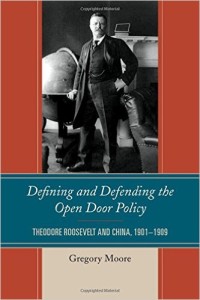
There has been little examination of the China policy of the Theodore Roosevelt administration. Works dealing with the topic fall either into brief discussions in biographies of Roosevelt, general surveys of Sino-American relations, or studies of special topics, such as the Chinese exclusion issue, which encompass a portion of the Roosevelt years. Moreover, the subject has been overshadowed somewhat by studies of problems between Japan and the United States in this era. The goal of this study is to offer a more complete examination of the American relationship with China during Roosevelt’s presidency. The focus will be on the discussion of major issues and concerns in the relationship of the two nations from the time Roosevelt took office until he left, something that this book does for the first time. Greater emphasis needs to be placed on creating a more complete picture of Teddy Roosevelt and China relations, especially in regard to his and his advisers’ perceptual framework of that region and its impact upon the making of China policy. The goal of this study is to begin that process. Special attention is paid to the question of how Roosevelt and the members of his administration viewed China, as it is believed that their viewpoints, which were prejudicial, were very instrumental in how they chose to deal with China and the question of the Open Door. The emphasis on the role of stereotyping gives the book a particularly unique point of view. Readers will be made aware of the difficulties of making foreign policy under challenging conditions, but also of how the attitudes and perceptions of policymakers can shape the direction that those policies can take. A critical argument of the book is that a stereotyped perception of China and its people inhibited American policy responses toward the Chinese state in Roosevelt’s Administration. While Roosevelt’s attitudes regarding white supremacy have been discussed elsewhere, a fuller consideration of how his views affected the making of foreign policy, particularly China policy, is needed, especially now that Sino-American relations today are of great concern.
Posted: August 15th, 2015 | No Comments »
Just realised that I have inadvertently contributed to an outbreak of of spooky spectral behaviour in the media and among Asia-Watchers as we hit the 70th anniversary of World War Two. “Ghosts”, it seems, appear to be the theme everyone’s going for….
Here’s me in The Diplomat on The Lingering Ghosts of World War Two in Asia
CCTV went for Ghosts of World War Two Haunt East Asia
The Economist went for Asia’s Second World War Ghosts
India’s NDTV also went for Ghosts of World War Two Haunt Asia
America’s The National Interest went for The Ghosts of World War II are Persistent Things
Australia’s The Conversation went for the slightly odd The Living Ghosts of 1945 Haunt Asia’s Rival Powers (sorry, but aren’t ghosts dead by definition?)
And many, many more around online and still to come I imagine….
Posted: August 15th, 2015 | No Comments »
Had a fun chat with RTHK3’s Morning Brew host Phil Whelan the other morning about Hong Kong in the First World War….internment of Germans, the SMS Emden, British men running home to fight, divided European communities in the Colony etc etc – you can listen online here…
Anyway, I promised a few links and some further reading for anyone interested in this subject – which really does deserve a book of its own….
The story of the SMS Emden (below) is told in this recent book about the Battle of Penang and in this excellent article by Stuart Heaver in the South China Morning Post and citing the research into the period by Bert Becker of HKU.

The article below, from the San Francisco Chronicle (1/9/14) refers to the seizure and internment of German and Austrian nationals in Hong Kong during World War One – click on it and it should expand and readable.
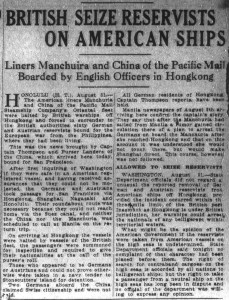
For more on the old Stonecutters Island (now part of the West Kowloon reclamation) see here – the picture below shows the old gun sheds on the Island back in the 1930s…
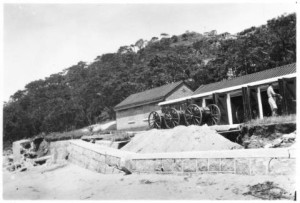
Details of the Penguin China and World War One series of books and e-books is here – they’re available as small books in China and Hong Kong or online via Amazon everywhere else. Most relevant perhaps to all this is Robert Bickers’s book on the men from Shanghai who left to fight in Europe in 1914…
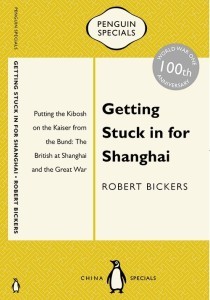
Posted: August 14th, 2015 | No Comments »
War came to Shanghai on August 14, 1937 known thereafter as “Black” or “Bloody Saturday”, from the air.

The Japanese launched bombing raid attacks on Shanghai and Nanking from Taiwan , but a passing typhoon made it impossible for their fighter cover to take off from the carrier Kaga, near Shanghai. The large Mitsubishi G3M2 “Nell” bombers were greeted by the unopposed Chinese 4th Fighter Wing led by Gao Zhihang and miserable weather over target. Col. Gao’s Hawk IIIs shot down several of the raiders and the others diverted to bases in Korea and Japan. This good luck would not last. The Chinese air force launched its own attacks despite the bad weather. Chinese Northrop bombers took off from Guangde, about 120 miles west of Shanghai with early Curtiss Hawk II dive-bombers supporting them. About 40 planes arrived over Shanghai, which was covered in thick cloud. The Curtiss Hawks began dive-bombing the Japanese Marine headquarters at the Kung Ta textile mills while Northrops attacked Japanese cruisers and supply ships at Wusong and the Japanese warship Idzumo, moored next to the Japanese consulate on the Whangpoo River, which served as the Japanese military headquarters. They missed.
One of the 550-pound bombs fell at the crowded intersection of Nanking Road and the Bund while two more bombs from a Northrop fell on bustling Avenue Edward VII. The bombs caught crowds of onlookers gazing up at the planes and the loss of life was appalling – 1,740 people killed and 1,873 injured. According to one account attributed to Claire Chennault, Chinese airmen had been trained to bomb from 7,500 feet, but the thick cloud made it necessary to come in much lower, and they released their bombs at 1,500 feet without adjusting their bombsights.
Another possibility is that the bomb racks, notoriously tempermental, released early when the arming switches were thrown. This would better account for the bombs falling where they did, according to some. The damage may even have been caused by or compounded by bombs jettisoned or dropped from a Japanese aircraft in the clouds above. In war strange things happen.
The next day and over the next weeks, the Japanese bombers from Taiwan and Korea returned with escort and inflicted great damage on Shanghai and Nanking. Victims ranged from Mr and Mrs Robert K. Reischauer, brother of the Japanologist and future ambassador, to the burnt baby photographed on the tracks at Shanghai South by “Newsreel” Wong.
China put up a heroic resistance in the air and on the ground, its Curtiss Hawk and Boeing 281 pilots fighting to the last with frightful losses against the deadly new Mitsubishi “Claude” shipboard fighters. An elite Chinese unit of Boeing 281 (P-26) monoplanes defended Nanjing to the last plane, while on the ground in Shanghai the crack German-trained KMT “Ironsides” troops, the “Lost Battalion” held the Joint Savings Godown on Suzhou Creek. But Shanghai (the parts not controlled by the foreigners), and then Nanjing, fell to the invaders.
Posted: August 13th, 2015 | No Comments »
I always seem to be coming across foreigners trashing cinemas – Italians getting angry at the Isis here and others getting angry at Nazi movies in Hongkew Park somewhere – and now Russians getting angry. Apparently in November 1941 (a couple of weeks before Pearl Harbor) white and red Russians were going at it at showings of Soviet films in the French Concession…..
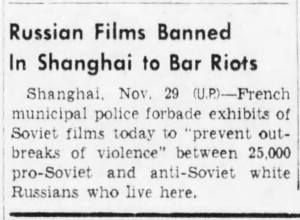
Posted: August 12th, 2015 | No Comments »
Kevin Tan’s history of the Singapore Natural History Museum is a fascinating read – a real skill to make what could be a rather dry subject so engrossing. There’s a fuller review here at the Asian Review of Books….
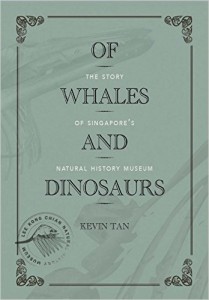
This is the story of Southeast Asia’s natural history collections.Officially established in 1878, the previous Raffles Museum – the oldest in the region – has one of the largest collections of Southeast Asian animals. With the opening of the Lee Kong Chian Natural History Museum at the National University of Singapore in 2015, the original Raffles Museum was ‘reincarnated’ and the loop on its remarkable 127-year history has closed.
Beneath the sleek exterior of the modern museum building lies a saga of titanic struggles and changes. That the collections survived at all—through the multiple challenges of the nineteenth century, the disruption of World War Two, and its potential disintegration in the face of Singapore’s modernization—is nothing short of miraculous. This book is not only an institutional history of the museum but also tells the story of the frustrations, commitment and courage of the numerous individuals who battled officialdom, innovated endlessly and overcame the odds to protect Singapore’s natural history heritage.












